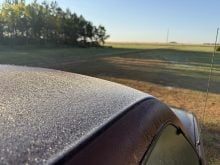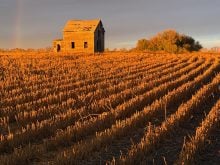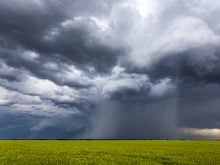Since March ends on a Monday and my deadline is the previous Friday, I will not be doing my usual monthly weather review in this issue, but I felt I should still do our monthly look ahead to see what the latest long-range forecasts are calling for April, May and June.
Before digging into that topic, let’s take a quick look at the state of Arctic and Antarctic sea ice. According to the National Snow and Ice Data Center, this year marks the fourth consecutive minimum Antarctic sea ice extent below two million square kilometres. The last four years are the four lowest in the 47-year record, and five of the lowest Antarctic sea ice extents have occurred since 2017. Of note, Antarctic sea ice has been historically variable, with near record highs occurring in 2013 and 2015. The question is whether the recent series of low years is the beginning of a trend.
In the Arctic, the average February 2025 Arctic sea ice extent was 13.75 million square kilometres, which was the lowest February extent in the 47-year satellite record and was 220,000 square kilometres below the previous record-low February set in 2018. Since 1979, February has lost about 1.92 million square kilometres of sea ice. Global ocean sea ice is now at a record low, coming in about two million square kilometres below the average, and nearly four million square kilometres below the record high year.
Read Also

Final crop reports show strong yields, quality
Crops yielded above average across the Prairies this year, and quality is generally average to above-average.
Now on to the long-range forecasts. Starting with the Canadian Farmers Almanac, they appear to be calling for average temperatures in both April and May with near to above average precipitation – they mention “fair” a lot. June’s forecast appears to be calling for near to above-average temperatures with near average precipitation. Over at the Old Farmers Almanac, they are calling for above-average temperatures from April to June with near to slightly above-average precipitation.
Looking at the computer models: extrapolating NOAA’s forecast northwards, it appears as if they are calling for near-average temperatures and precipitation. The CFS for is calling for near to slightly above-average temperatures in April and above average in May and June. Their precipitation forecast is calling for near to above-average amounts in April, near to above-average amounts over Alberta and Saskatchewan in May but below-average amounts in Manitoba.

June’s forecast is for near to below-average amounts across the southern Prairies with near to above-average amounts further north. The CanSIPS model is calling for above-average temperatures for all three months except for Manitoba seeing below-average temperatures in April. Their precipitation forecast is for below-average amounts right through this period. Our last weather model, the ECMWF, is calling for above-average temperatures and near to below-average precipitation for all three months.
Lastly, my take on all of this. I’m going with the majority indicating above-average temperatures from April to June along with near to below-average precipitation.
As usual, I hope whatever weather we do see is exactly the type of weather you want.
Daniel Bezte is a teacher by profession with a BA in geography, specializing in climatology, from the University of Winnipeg. He operates a computerized weather station near Birds Hill Park, Man. Contact him at dmgbezte@gmail.com.
















